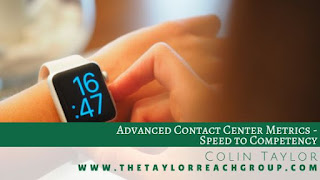By Colin Taylor
We are now into the fourth quarter of the year. Retail and ecommerce firms are gearing up for the holiday season, which means more staff. But where are they going to find more staff? It is hard to find new staff. We can blame the Great Resignation if we like, but where did all of the workers go? Have all of the frontline agents found new rewarding and well-paying jobs? Certainly, some have, but I think many people have decided to take a pause. Sure, some are opening a shop, trying their hands at gig work, changing careers, and certainly some have shifted completely out of the workforce.
Many in fact have exited the workforce, including those who deferred their retirement during Covid and are now looking to retire. That could mean 3 years of retirements occurring in a single year. Is there any doubt that this has helped to fuel low unemployment and the shortage of workers. What happens if we don’t have enough staff to deliver the services in the manner and with the proficiency that we wish? With our current and former staff members are considering their options — maybe even quitting or retiring — that is a sad commentary on us as employers. What does it say about the roles and the work these folks have done in our call and contact centers that leaving seems like a good idea?
We know that working in a front-line role and dealing with customers is challenging. In COVID and post-COVID environments, it can be even more of a challenge as it can be exacerbated by staff shortages.
Perhaps the Great Resignation is really the great Re-Think; our staff are rethinking their careers and asking themselves, “is this really how I want to spend the rest of my career?” We as employers need to look at ourselves and ask a number of questions... READ MORE












.jpg)